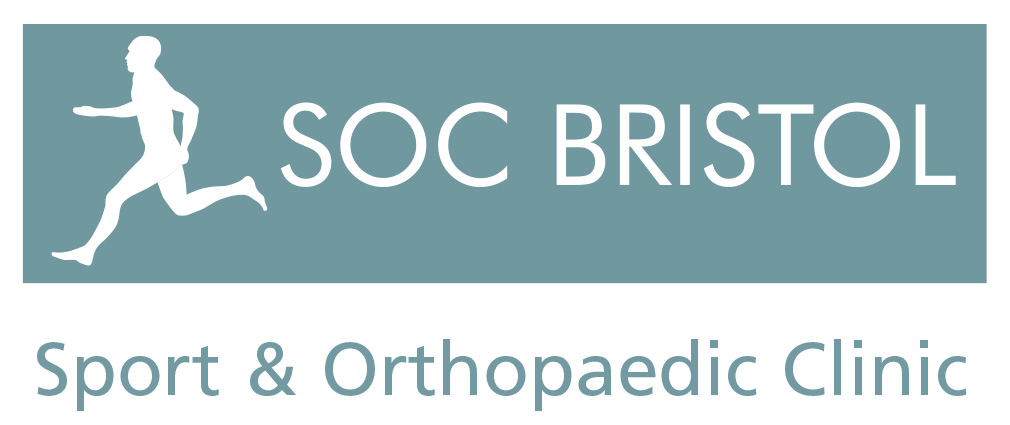Shoulder Impingement.
Impingement is a condition or syndrome (a collection of associated symptoms) in which there is pain on bringing the arm out to the side or above the head, with pain classically felt over the upper arm.
It is typically a consequence of irritation or damage to the tissues in the sub acromial space between the bony tip of the shoulder blade (the scapula), the acromion and the bony prominence of the humerus, the greater tuberosity.
The pain may come on for no apparent reason or it may be associated with a particular activity or injury. The precipitating activities typically are overhead such as painting a ceiling or cutting a hedge or may be sporting such as freestyle swimming or tennis. The symptoms may also come on after a trip or fall or specific sporting injury.
Structures involved:
Subacromial bursa.
The subacromial bursa is a small fluid-filled sack, which functions to reduce friction and allow free movement between the acromion and the underlying rotator cuff tendons. It may become irritated and painful, termed subacromial bursitis, resulting in impingement symptoms. Although described as a bursitis this is a relative misnomer in that the process is not predominantly a result of inflammation.
Rotator cuff tendons.
The rotator cuff tendons may be irritated or damaged resulting in impingement symptoms. This may extend from irritation of the tendon, termed rotator cuff tendonitis or more correctly rotator cuff tendinosis, to a partial tear or full thickness tear of the rotator cuff tendons.
There may calcific deposits within the tendons of the rotator cuff, termed calcific tenodonitis. This may produce impingement type pain or may be asymptomatic.
Acromion.
The shape of the tip of the shoulder varies between individuals and may change shape with age. The side view of the acromion is typically fairly straight. If the acromion is curved, becomes more curved or a spur (enthesite) develops the subacromial gap may be diminished. The diminished space and the prominence of the bone may result in physical irritation or damage to the rotator cuff tendons.
Scapulo-Thoracic Joint (ST Joint)
The movement and positioning of the scapula is extremely important in considering impingement symptoms. As the arm is brought out to the side or front the scapula should move and rotate. As it does so the acromion effectively moves away from the greater tuberosity increasing the subacromial space and reducing the risk of impingement. If the scapula does not move appropriately or is poorly positioned at the start of movement there is an increased risk of impingement with relatively little glenohumeral (ball and socket) movement.
Symptoms:
Pain.
The may vary from mild discomfort to severe pain resulting in loss of sleep. The pain is typically felt over the upper arm and may extend down to the elbow. It is not usually felt over the shoulder itself as one might expect. The pain is typically worse on movement out to the side (abduction) or front (elevation). The pain is classically worst in the mid range of movement between 70 and 120 degrees, termed a painful mid-arc. There may also be acute pain or tenderness perceived over the deltoid close to the acromial origin.
Stiffness.
The shoulder may feel stiff with a reduced ability to lift the arm out to the side (abduction) or front (elevation). Rotation of the arm may feel reduced particularly reaching behind your back. It is frequently the pain, which produces the apparent restriction in movement. Actual stiffness is typically associated with other conditions such as a Frozen Shoulder or Intrinsic Capsular Stiffness.
Weakness.
The shoulder may feel weak, particularly with movements out to the side (abduction) or front (elevation). This weakness is typically a consequence of pain inhibition of the muscles. True weakness is typically associated with a tear of the rotator cuff tendons.
Diagnosis:
The diagnosis is often apparent from the reported symptoms and examination. However, it may be difficult to distinguish between irritation of the subacromial tissues and structural tendon damage or rotator cuff tear.
X-Rays (plain radiographs) of the shoulder are typically taken. These may demonstrate acromial shape (morphology) associated with an impingement syndrome or other pathology such as Calcific Tendonitis.
An Ultrasound scan (USS) or Magnetic Resonance Imaging (MRI) scan may be arranged to identify structural damage such as a rotator cuff tear.
An injection of local anaesthetic often with steroid may be provided to the subacromial space as confirmation of the diagnosis as well as part of treatment. Re-examination of the shoulder following the injection may be particularly useful (Neer’s imingement test).
Treatment:
Non surgical options:
Rest and avoidance of exacerbating activities.
In the first instance activities, which exacerbate symptoms, should be avoided. This typically includes repetitive overhead activities and sports including freestyle swimming etc..
Rehabilitation.
Physiotherapy and rehabilitation of the shoulder is extremely important in treating impingement. It is particularly useful in optimising core stability, capsular stiffness associated with an internal roatational deficit (GIRD) as well as rotator cuff and scapulothoracic function.
Analgesia and anti-inflammatory medication.
While the process within the subacromial space is not predominately an inflammatory one, anti-inflammatories may be helpful in addition to simple painkillers (analgesia) eg: Paracetamol.
Local injections of steroid.
Injections of steroid, normally given with a local anaesthetic agent typically produce symptomatic relief in the short or long term. These are useful as diagnostic test as well as offering treatment benefits. Caution is required when considering repeat injections as the steroids may have a detrimental effect on the tendon tissue. And may mask the development of structural damage.
Link to additional information on steroid injections.
Operative treatment:
If pain continues or recurs following non-operative management then surgery may be necessary, typically in the form of an arthroscopic (key-hole) subacromial decompression (acromioplasty). This involves shaving bone from the under surface of the acromion. This increases the sub acromial space and reduces irritation of the rotator cuff tendons.
Link to Arthroscopic Subacromial Decompression Surgery.

